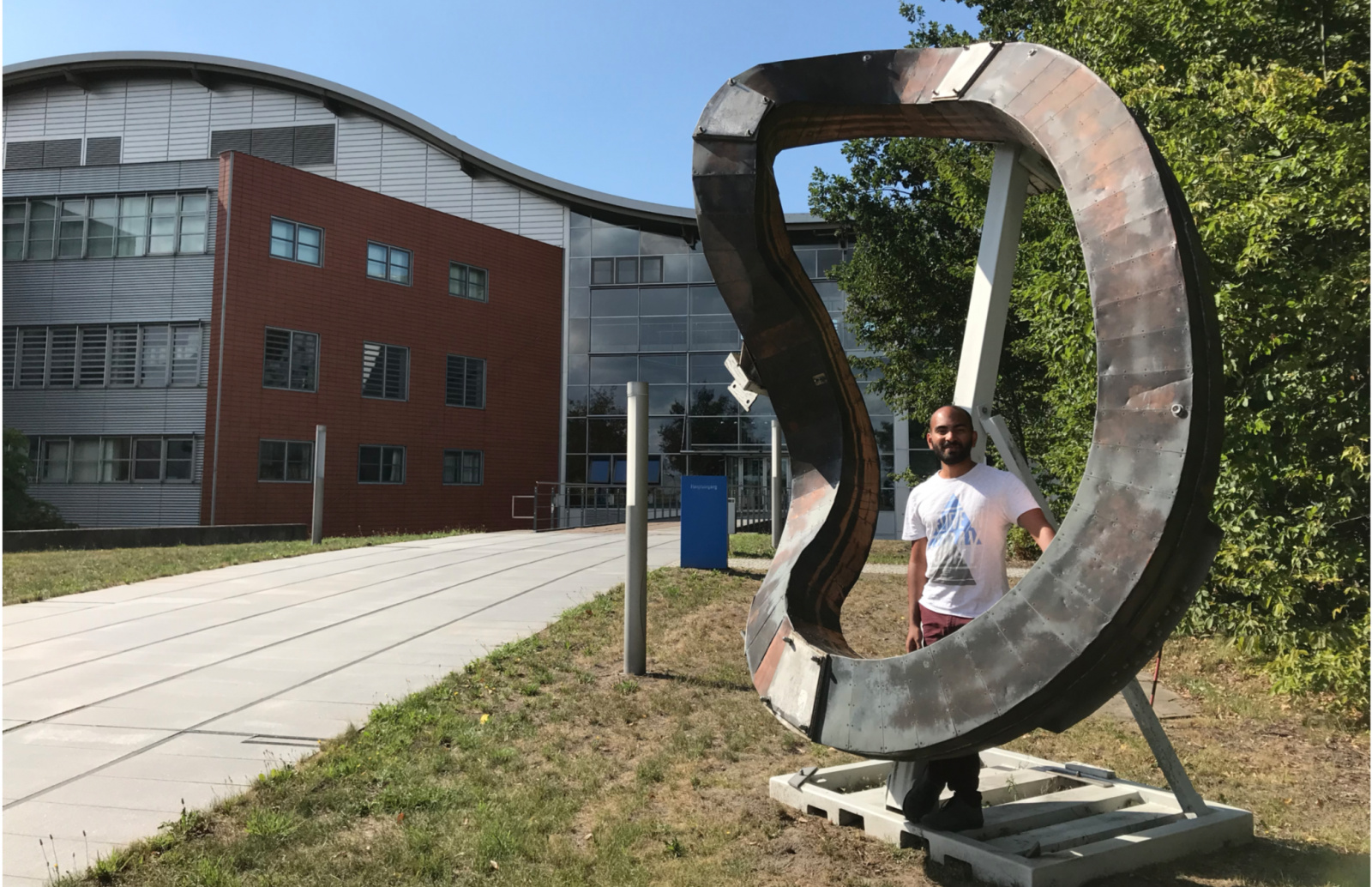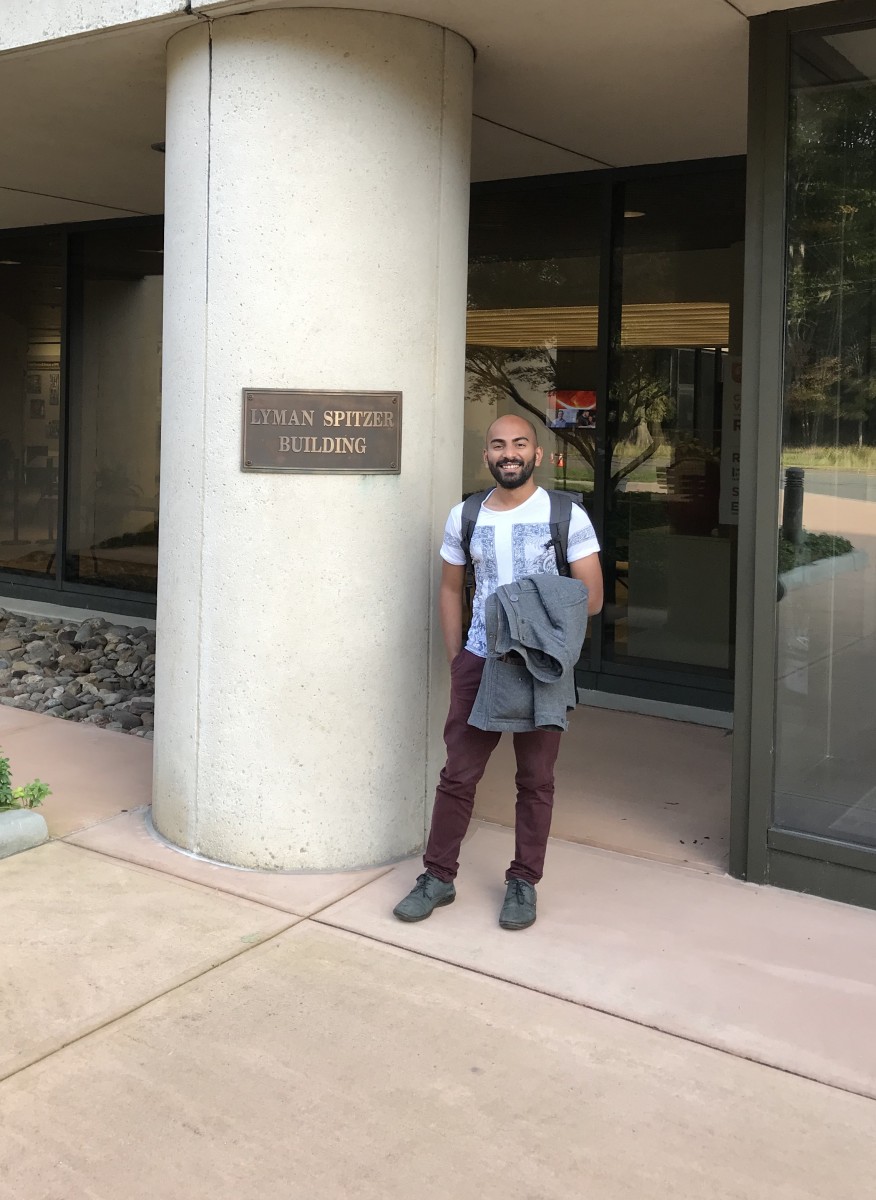I am currently studying a masters in Fusion energy at the Technical University of Eindhoven, and as a part of my research project, I have had the opportunity to work with the experts in the field of plasma turbulence, both at IPP in Greifswald, Germany, and at PPPL in Princeton, USA.
Greifswald
 Some of these experts are based in IPP (Institute for Plasma Physics) Greifswald, Germany. Greifswald also has the world’s largest stellarator device, Wendelstein 7-X (W7-X). Being there during the most recent operational campaign was incredibly exciting! To have a “first look” at how operations are carried out at a fusion reactor was very educational. This was made possible with the help of Fusenet, which sponsors students financially to carry out their projects abroad.
Some of these experts are based in IPP (Institute for Plasma Physics) Greifswald, Germany. Greifswald also has the world’s largest stellarator device, Wendelstein 7-X (W7-X). Being there during the most recent operational campaign was incredibly exciting! To have a “first look” at how operations are carried out at a fusion reactor was very educational. This was made possible with the help of Fusenet, which sponsors students financially to carry out their projects abroad.
As the closest airport is either Berlin, or Hamburg, the best option for me was to simply take the train to Greifswald, which however takes a long time from my home university at Eindhoven. Greifswald is a town on the smaller side, but has a very friendly vibe to it. A vibrant student culture adds to the lively atmosphere. Although, I could not sample most of what Greifswald had to offer till the weekends. There are several good places to eat out, and have a drink with friends. Hard not to keep running into people you know, in such a small town.
My work involved studying plasma turbulence, and optimising stellarators such that the density gradient at which turbulent transport takes over is shifted towards higher density gradients. This point that I am referring to is called the critical gradient. This will allow stellarators to be operated at higher density gradients, without the trapped-electron mode (TEM) playing a significant part, which is the one specific turbulent channel that I am working with.
The first objective was to re-derive the relation that describes the critical gradient of the TEM. This will provide us with a relation between the critical gradient, and the magnetic geometry of the stellarator. This relation can then be used in an optimisation code called STELLOPT, to change the magnetic geometry of a stellarator such that the critical gradient of turbulent mode is moved to higher density gradients.
My time at Greifswald culminated with a talk that all masters students have to give during the initial stages of their projects. As most people at the university were away on their summer breaks, I did not have a large audience. However, I had very helpful feedback from the people who were present, and especially from my supervisor. Once again, I would like to thank Fusenet for helping to make this internship possible, and my supervisor for guiding me through the project so far.
Princeton
 This is the second part of my thesis work that I have been working on between three locations; IPP (Institute for Plasma Physics) Greifswald, Technical University of Eindhoven, and the Princeton Plasma Physics Laboratory (PPPL). I have been very lucky to be given this opportunity, and have learnt a lot from it. My work involved studying plasma turbulence, and optimising stellarators such that the density gradient at which a particular channel of turbulent transport takes over is shifted towards higher density gradients. This point that I am referring to is called the critical gradient. This will allow stellarators to be operated at higher density gradients, without the trapped-electron mode (TEM) playing a significant part, which is the one specific turbulent channel that I am working with.
This is the second part of my thesis work that I have been working on between three locations; IPP (Institute for Plasma Physics) Greifswald, Technical University of Eindhoven, and the Princeton Plasma Physics Laboratory (PPPL). I have been very lucky to be given this opportunity, and have learnt a lot from it. My work involved studying plasma turbulence, and optimising stellarators such that the density gradient at which a particular channel of turbulent transport takes over is shifted towards higher density gradients. This point that I am referring to is called the critical gradient. This will allow stellarators to be operated at higher density gradients, without the trapped-electron mode (TEM) playing a significant part, which is the one specific turbulent channel that I am working with.
I arrived in New York late September such that I would be all set to start my work with Dr. Mynick at the start of October. Unfortunately, visa requirements are such that it took me about 10 days to have everything ready to go! My work here involved a lot of math, trying a new approach towards deriving a dispersion relation that can describe TEM turbulence. Without Dr. Mynick’s help, this task would have been incredibly difficult.
Whilst carrying out my work, I was lucky enough to be given access to other graduate student facilities at PPPL, like the computing cluster. This was a new experience for me, but one that taught me a lot. While Princeton is a very small town, the student culture is very rich, and there is always something to do. So when I wasn’t working, I was never really bored. The weekends that weren’t spent in the Firestone library, were spent in New York. The close proximity of Princeton to NYC is an amazing opportunity to explore it. Ideal for a weekend trip, or even a day trip. Unfortunately, I could not make it to Washington D.C.
I am very thankful to Dr. Mynick for supervising me through my time at Princeton, and PPPL for hosting the project. Once again, I would like to thank Fusenet for helping to make this internship possible.
- Nishith Chennakeshava
